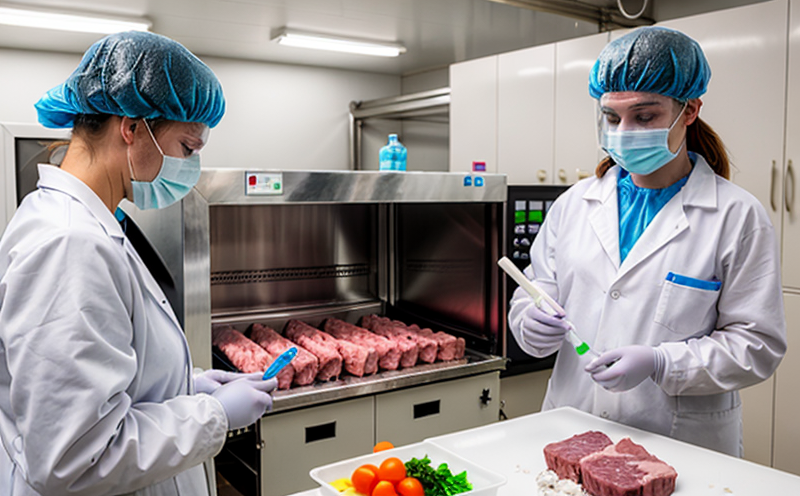EN ISO 6887-1 Preparation of Meat and Dairy Samples for Microbiology
The EN ISO 6887-1 standard is a crucial protocol used in the food industry, especially for microbiology testing within dairy and meat products. This method ensures that samples are prepared accurately to meet regulatory requirements and quality standards set forth by international organizations such as the European Committee for Standardization (CEN).
The primary objective of this procedure is to provide a standardized approach for sample preparation in order to ensure consistent results from microbiological analyses. Sample preparation plays a critical role in ensuring reliable testing outcomes, which are essential for maintaining product safety and quality.
Under this standard, the preparation process involves several key steps: sampling, homogenization, dilution, and plating of samples onto appropriate media. Each step requires precise techniques to prevent contamination or loss of microbial content that could affect test results. The homogenization procedure is critical as it ensures that all parts of the sample receive equal treatment during subsequent analysis.
Homogenization typically involves blending or grinding the sample in a buffer solution to release microorganisms into suspension, followed by appropriate dilution before plating onto selective media. Selective media are designed to promote growth only of specific groups of microorganisms relevant to dairy and meat products. This targeted approach allows for more accurate detection of pathogens like Salmonella, Listeria, or E. coli.
The standard also specifies temperature controls during sample handling to prevent microbial activity that could alter test results. Proper cooling methods must be employed immediately upon receipt of fresh samples from production facilities or farms. Maintaining the integrity of the sample throughout preparation is essential for obtaining valid and reliable data.
In practice, laboratories adhering to EN ISO 6887-1 use advanced instrumentation such as homogenizers equipped with temperature control systems, automated samplers, and spectrophotometers for accurate measurement of dilutions. These tools ensure consistent sample preparation across different batches or lots produced by various suppliers.
By following these standardized procedures outlined in EN ISO 6887-1, laboratories can demonstrate compliance with regulatory requirements while also enhancing their reputation among clients seeking assurance about the safety and quality of processed dairy and meat products. This standard supports continuous improvement efforts within food manufacturing operations by providing clear guidelines for sample preparation practices.
- Homogenization in a buffer solution
- Appropriate dilution
- Selective plating onto media
- Temperature control during handling





